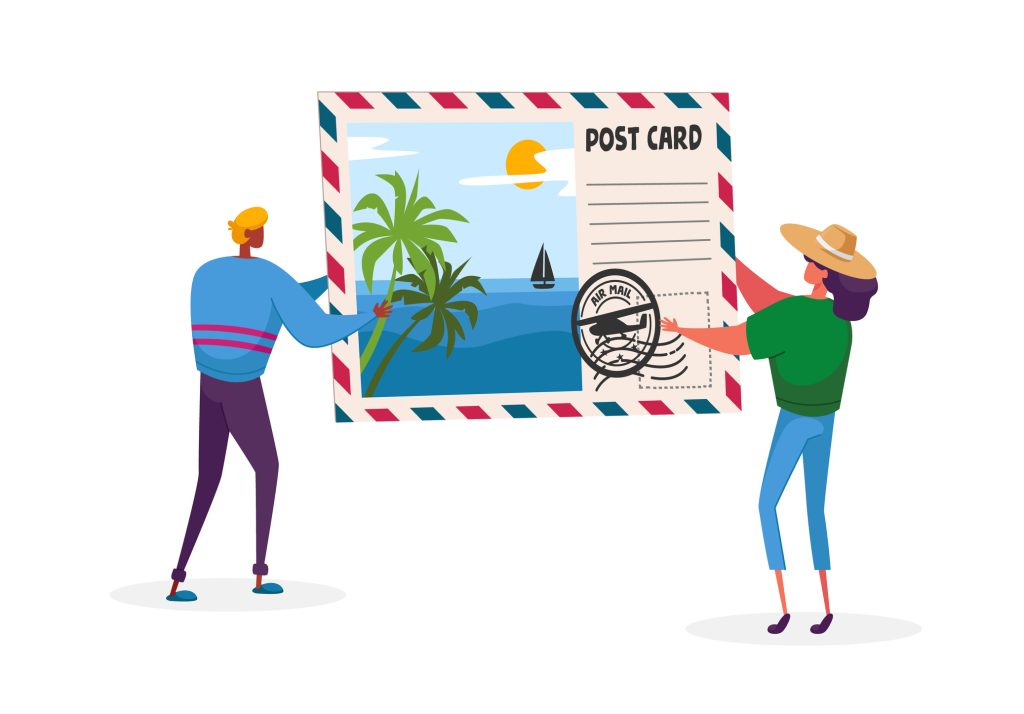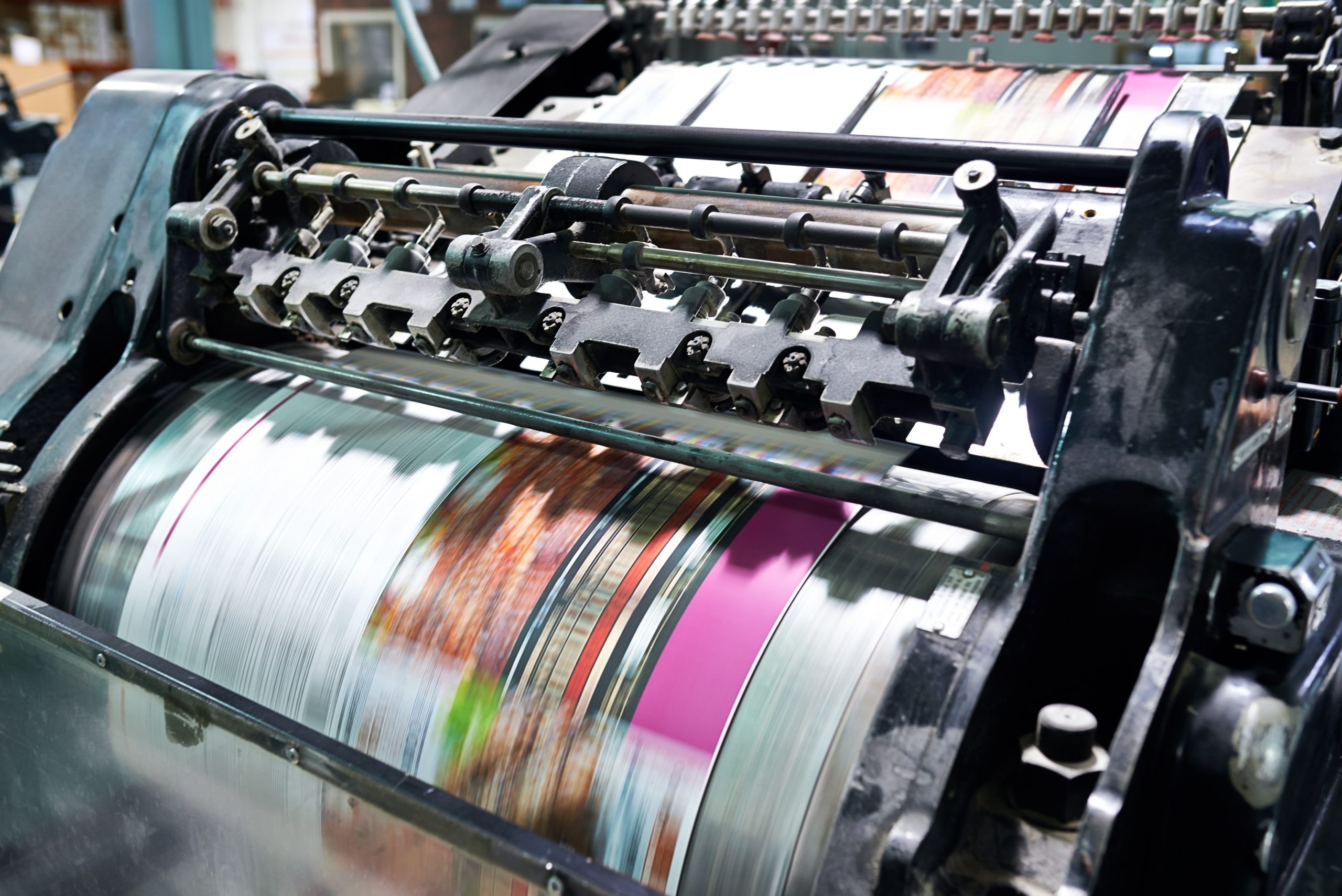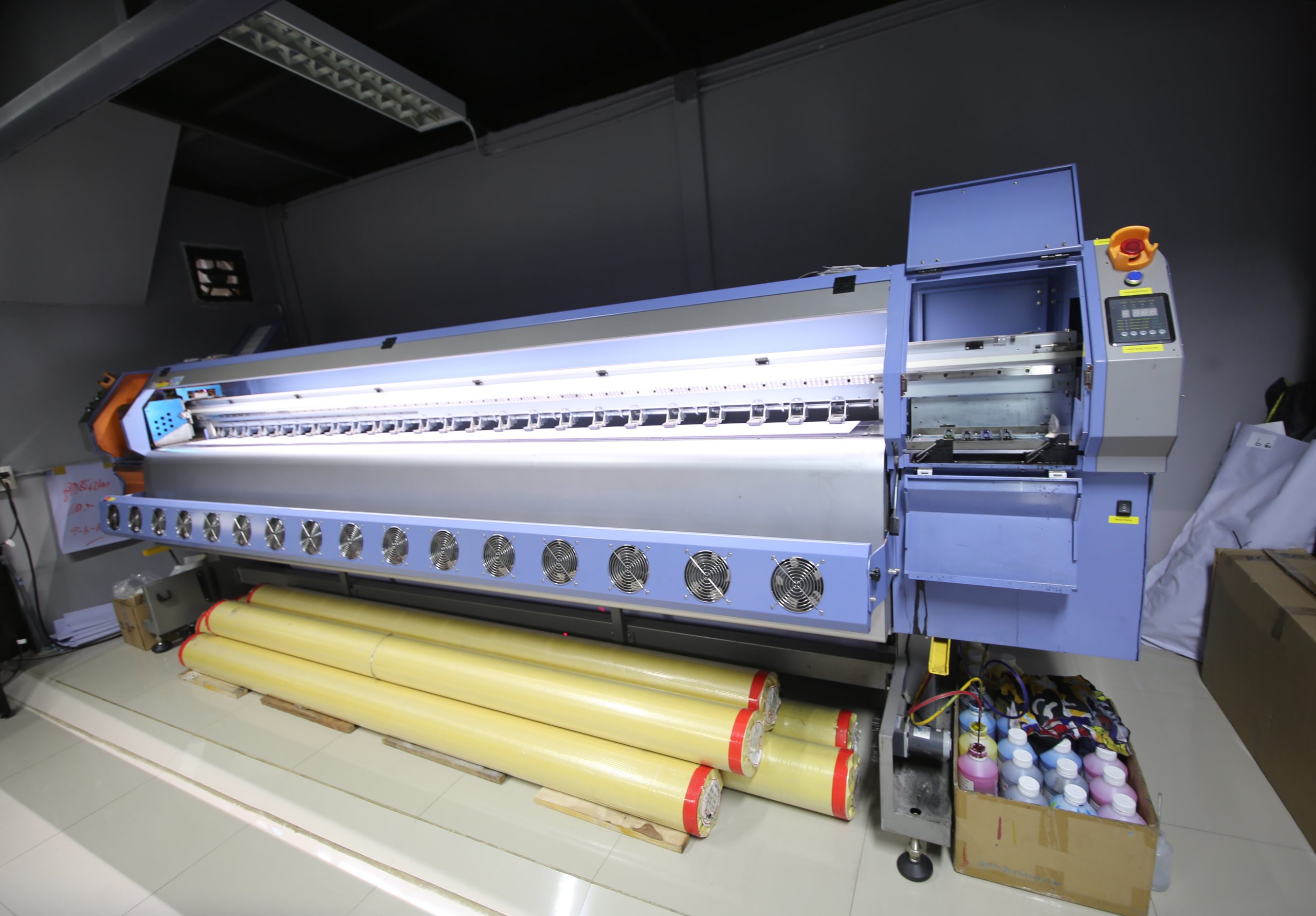There’s no denying that the printing world has come a long way. From the traditional methods of putting ink on paper to the modern digital print era, copy printing has transformed over centuries to make our lives easier. If you find yourself in Phoenix, AZ, looking for trusted copy printing services, you’ve come to the right place. This ultimate guide will walk you through the wonders of copy printing, top-rated local printers, and valuable tips on getting the best deals. Copy printing is not merely pressing buttons on a copying device. Producing high-quality prints is an intricate process to ensure your content is presented professionally and effectively. Understanding the basics of copy printing will help you navigate this essential service, whether for personal use or business purposes. The Gutenberg press might have revolutionized printing in 1440, but the advent of copying machines like the Xerox 914 in 1959 initiated a new era for print reproduction. Since then, the industry has evolved significantly, advancing in speed, quality, and affordability. Today, copy printing services employ various techniques to address client’s needs, ranging from small-scale personal projects to large-scale corporate requirements. Some popular methods include: A city burgeoning with innovation like Phoenix is bound to have an abundance of stellar copy-printing service providers. Here’s a roundup of some local favorites: Now that you have an overview of the industry and the top players in Phoenix consider these quick tips to maximize your copy-printing experience: Ask yourself some pertinent questions before choosing a copy printing service. What kind of material do you need to print? Are you looking for black and white copies or color copies? Do you require a speedy turnaround or are you planning? While most copy-printing services offer competitive prices, assessing each service provider is essential to get the best deal without sacrificing quality. Lastly, I’d like you to choose a copy printing company with outstanding customer service to ensure hassle-free communication and establish a long-term relationship. Copyfast Printing in Phoenix, AZ – Your Gateway https://www.scottsdaleprintservices.com Print marketing may seem like a thing of the past in today’s digital age, but there are still brands out there that are finding success with this traditional form of advertising. While online marketing strategies dominate the landscape, these brands have found unique ways to incorporate print into their marketing campaigns and stand out from the competition. In a world where everything is just a click away, print marketing can offer a tangible and memorable experience for consumers. From eye-catching brochures to creative direct mail campaigns, these brands are proving that print is far from dead. In this article, we will explore three brands that have successfully utilized print marketing ideas to connect with their target audience and drive results. Whether it’s through stunning visuals, clever copywriting, or innovative design, these brands have found a way to make print marketing work for them. By taking a closer look at their strategies and the impact they have had on their respective industries, we can gain valuable insights and inspiration for our own marketing efforts. So, let’s dive in and discover how these brands have leveraged the power of print to make a lasting impression on consumers. Apple, a tech giant known for its innovative products, has effectively utilized print marketing ideas to reach its target audience. Despite being heavily invested in digital marketing, Apple recognizes the value of print materials in its marketing efforts. One example of Apple’s use of print marketing materials is its business cards. These cards not only contain contact information but also serve as a representation of the brand’s sleek and minimalist design aesthetic. Apple has also launched numerous print campaigns throughout the years, showcasing its products in visually striking ways. These campaigns often feature bold colors and eye-catching visuals, effectively capturing the attention of potential customers. In addition to print ads, Apple has utilized direct mail pieces to reach a wider audience. These mailers often include special promotions or incentives, such as loyalty cards or gift cards, to encourage customer engagement and foster brand loyalty. Nike is a brand that effectively harnesses print marketing ideas to reach a wider audience and enhance brand visibility. Through print advertising and promotional products, Nike has established a strong presence in the market. Nike has executed various print marketing campaigns that capture attention and resonate with its target audience. One notable example is the “Just Do It” campaign, which has been a long-standing and successful print campaign for the brand. The campaign features powerful imagery and concise messaging that motivates and inspires individuals to push their limits and achieve their goals. In addition to print ads, Nike leverages promotional products to further expand its brand visibility. The brand frequently distributes items such as t-shirts, caps, and sports equipment with the Nike logo and designs. These products not only serve as effective marketing materials but also enhance customer loyalty by fostering a sense of belonging to the Nike community. Nike’s print marketing efforts have proven to be impactful due to their ability to evoke emotional responses. By strategically utilizing bold colors, impactful imagery, and empowering messages, Nike’s print materials create an emotional connection with the audience, further solidifying the brand’s position in the athletic market. Amazon, known primarily for its dominant online presence, has also incorporated print marketing ideas to enhance its brand awareness and customer experience. While digital marketing is a key component of their strategy, Amazon recognizes the value of print materials in reaching a wider audience and leaving a lasting impression. One effective print marketing strategy utilized by Amazon is the distribution of promotional products. By offering branded items such as t-shirts, tote bags, and pens, Amazon extends their reach beyond the digital realm. These promotional products serve as tangible reminders of the brand, keeping Amazon top of mind for potential customers. Another way Amazon enhances its brand awareness through print marketing is by using custom packaging. With their iconic smile logo and branded shipping boxes, Amazon ensures that each package becomes a mini advertising opportunity. The custom packaging not only adds a personal touch to the customers’ experience but also reinforces the brand’s image and values. Additionally, Amazon occasionally incorporates print ads in targeted publications to further promote their products and services. These strategic placements allow Amazon to reach specific demographics and engage potential customers who may not be as active in the digital space. In conclusion, print advertising continues to be a relevant and effective marketing strategy even in today’s digital world. While digital marketing efforts have become increasingly prominent, print advertising still holds value in leaving lasting impressions on target markets. Being physically present where your audience can see you has a powerful impact. Print advertising allows businesses to engage with their target audience on a tangible level, creating a more personal connection. By utilizing visually appealing and creative print materials, brands can evoke emotional responses and create a memorable experience for customers. Brands such as Apple, Nike, and Amazon have successfully implemented print advertising campaigns. Apple’s sleek and minimalistic print ads effectively convey their brand image and product features, leaving a lasting impression on potential customers. Nike has utilized powerful visuals and compelling storytelling in their print campaigns, resonating with their target audience and building brand loyalty. Amazon’s use of custom packaging and promotional products extends their reach beyond the digital realm, reinforcing their brand image and garnering customer loyalty. In today’s digital world, a well-rounded marketing strategy includes both digital and print advertising efforts. Print advertising allows businesses to reach a wider audience, evoke emotional reactions, and create lasting impressions. By incorporating effective print materials into their marketing collateral, businesses can enhance their overall marketing efforts and create a memorable customer experience. In this article, I will share 5 cost-effective ideas for print marketing on a budget. These strategies will help you maximize your marketing efforts without draining your resources. Whether you’re a startup with limited funds or a well-established business looking to cut costs, these ideas will give you the inspiration you need to create impactful print materials that won’t break the bank. So, if you’re ready to take your print marketing to the next level without breaking your budget, keep reading to discover these innovative and affordable ideas. With a little creativity and strategic planning, you can effectively reach your target audience and achieve your marketing goals. When it comes to cost-effective print marketing, utilizing online tools for DIY design can be a game-changer. With the abundance of free design tools and templates available, creating professional-looking print designs has never been easier, even for business owners on a tight budget. One popular online design tool is Canva, which offers a wide range of customizable templates for various print materials such as business cards, flyers, and brochures. With its user-friendly interface and drag-and-drop functionality, even those with limited design experience can create eye-catching designs in no time. For those who prefer using Microsoft software, both Word and Publisher offer a plethora of free templates that can be used to design print materials. Whether it’s a simple business card or a multi-page brochure, these tools provide a cost-effective solution for DIY design. By leveraging these online tools, business owners can bypass the need for expensive design software or hiring a professional designer. Instead, they can create their own professional-looking print materials, tailored specifically to their target audience and marketing goals. Another cost-effective idea for print marketing on a budget is to print in bulk. When businesses print in larger quantities, they can benefit from a reduction in the price per piece. This means that the cost of each printed item, such as brochures or flyers, decreases as the volume increases. Printing in bulk offers several advantages. Firstly, it allows businesses to have a ready supply of marketing materials on hand, ensuring that they never run out when reaching out to potential customers. It also allows for consistent branding and messaging across all marketing efforts. To maximize the usage of bulk printed materials, businesses can strategically incorporate them into various marketing campaigns. For example, brochures can be used at trade shows, community events, or networking opportunities to provide detailed information about products or services. Flyers can be distributed at local shops, cafes, or community bulletin boards to raise awareness and attract potential customers. When it comes to print marketing on a budget, focusing on high-impact materials is essential. These materials can effectively communicate your message to your target audience and make a lasting impression. By using eye-catching and memorable materials, you increase the chances of grabbing the attention of potential customers and driving them to take action. One example of a high-impact material is brochures. Brochures provide a great opportunity to showcase your products or services in a visually appealing and informative way. They can be distributed at trade shows, networking events, or even mailed directly to potential customers. With a well-designed brochure, you can effectively convey your brand’s story, features, and benefits. Flyers are another high-impact material that can be used to quickly grab attention and promote special offers or events. They can be distributed in high-traffic areas, such as local shops or cafes, or even posted on community bulletin boards. By using bold colors, compelling headlines, and engaging visuals, you can make your flyer stand out from the crowd and entice potential customers to learn more. Posters are also an effective high-impact material for print marketing strategies. They can be placed in strategic locations, both indoors and outdoors, to catch the attention of passersby. With larger and bolder designs, posters have the power to make a statement and increase brand visibility. When it comes to cost-effective print marketing, one often overlooked option is utilizing local print shops. These businesses offer a range of benefits that can help you maximize your marketing efforts without breaking the bank. One of the biggest advantages of working with local print shops is the personalized service they provide. Unlike large online printing companies, local print shops take the time to understand your specific needs and goals. They can offer guidance on design, paper selection, and printing techniques to ensure you get the best results. Another benefit of using local print shops is their quick turnaround times. With tight deadlines, you can rely on local print shops to deliver your marketing materials promptly. This is especially important when you have time-sensitive promotions or events. Collaborating with other businesses to share costs in print marketing efforts can be a highly effective strategy, especially for small businesses operating on a tight budget. By partnering with complementary or non-competitive businesses, companies can pool their resources and reach a larger audience while minimizing individual expenses. Here are five examples of ways businesses can collaborate for shared costs in print marketing: 1. Jointly Funded Direct Mail Campaigns: Two or more businesses can combine their marketing budgets to fund a direct mail campaign targeting their shared target audience. This approach allows for the costs of design, printing, and postage to be divided among the participating businesses, reducing individual expenses while increasing the impact of the campaign. 2. Co-Branded Marketing Materials: Businesses with similar target audiences can collaborate to create co-branded marketing materials, such as brochures or flyers. By splitting the design and printing costs, both businesses can benefit from increased brand exposure and cost savings. 3. Shared Booth Space at Community Events: Participating in community events like trade shows or fairs can be costly for individual businesses. By sharing booth space with other businesses, companies can divide the expenses of booth rental, signage, and promotional materials, making it more affordable for each participant. 4. Cross-Promotion through Bundled Offers: Businesses can collaborate on creating bundled offers that combine products or services from multiple companies. By sharing the cost of printing promotional materials like coupons or discount cards, businesses can leverage each other’s customer base to increase sales while spreading the advertising costs. 5. Collaborative Advertising in Local Publications: Local magazines or newspapers often offer discounted rates for joint advertising initiatives. Businesses can team up to create shared advertisements promoting their products or services, reducing individual costs without compromising reach. In conclusion, implementing cost-effective print marketing strategies doesn’t have to break the bank. By focusing on targeted campaigns, leveraging partnerships, utilizing creative designs, and optimizing printing options, you can effectively promote your business without spending a fortune. Remember, print marketing still holds value in today’s digital age. It can help you reach a wider audience and make a lasting impression on potential customers. By implementing these cost-effective ideas, you can maximize your return on investment and achieve your marketing goals without draining your budget. So, don’t shy away from print marketing just because you’re on a tight budget. With a little creativity and strategic planning, you can make a big impact without breaking the bank. Start implementing these ideas today and watch your business thrive! Are you looking for new ways to increase brand awareness for your business? While digital marketing strategies are effective, don’t overlook the power of print marketing. Print materials can leave a lasting impression on your target audience and help establish your brand identity. In this article, we will explore five creative ideas to drive brand awareness through print marketing. Print marketing has stood the test of time and remains a valuable tool in the marketing arsenal. With the rise of digital advertising, many businesses have shifted their focus solely to online platforms, leaving print marketing opportunities untapped. However, incorporating print materials into your marketing strategy can provide a unique and tangible experience for your customers. From business cards and brochures to direct mail and signage, there are countless ways to leverage print marketing to enhance brand awareness. By exploring innovative ideas and techniques, you can effectively capture the attention of your target audience and leave a lasting impression. In the following paragraphs, we will discuss five ideas that can help your business drive brand awareness through print marketing. In the world of print marketing, one of the most powerful tools for driving brand awareness is through unique packaging design. With so many products vying for attention, it’s crucial for businesses to stand out from the crowd and leave a lasting impression on potential customers. A well-designed branded package not only protects the product but also serves as a powerful marketing tool. When customers receive a package that is visually appealing, they are more likely to be delighted and excited about the brand. This positive experience encourages them to share it on social media platforms like Instagram, Facebook, or Twitter, amplifying brand exposure and reaching a wider audience. Direct mail campaigns are a highly effective marketing tool for driving brand awareness. By using innovative print materials such as postcards, brochures, or catalogs, businesses can showcase their brand’s unique offerings and capture the attention of potential customers. Collaborating with a commercial printing expert is crucial in executing a successful direct mail campaign. These experts have in-depth knowledge of print materials, design elements, and can provide valuable insights on maximizing the effectiveness of the campaign. They can help businesses create visually appealing and engaging print materials that stand out in mailboxes and leave a lasting impression on recipients. Direct mail has high open and engagement rates compared to other forms of marketing. When recipients receive a well-designed postcard or brochure, they are more likely to open and engage with the content. Incorporating design elements like bolded text, quality imagery, and eye-catching colors can capture attention and convey the brand’s message effectively. Print advertising is a powerful tool for building brand awareness and trust among consumers. Despite the rise of digital marketing, print ads continue to be an effective marketing strategy. In fact, research shows that 82% of readers trust print ads when making purchase decisions. One of the major advantages of print advertising is its ability to reach a highly engaged and local audience. With print ads, businesses can target specific geographical areas to reach potential customers in their local community. This localized approach allows businesses to connect with consumers who are more likely to be interested in their products or services. By targeting a specific location, businesses can tailor their messaging to appeal to the unique needs and preferences of the local audience. Print advertising also provides a tangible and tactile experience for consumers. Ads in magazines, newspapers, or flyers are physically held and interacted with, creating a deeper connection compared to digital ads that can be easily scrolled past or ignored. This physical presence of print ads helps to build brand awareness and trust. When consumers can see and touch the ad, they are more likely to remember and consider the brand. Referral programs can be a highly effective strategy for driving brand awareness through print marketing. By leveraging the power of word-of-mouth marketing, businesses can harness the trust and loyalty of their existing customers to generate new business. One of the key benefits of referral programs is the ability to tap into the networks of loyal customers. These customers have already experienced the value and quality of a business’s products or services, making them ideal advocates for spreading the word. By incentivizing referrals through a program, businesses can encourage their satisfied customers to share their positive experiences with friends, family, and colleagues. To implement a referral program, businesses can incorporate it into their print marketing collateral, such as business cards or direct mail campaigns. Including clear instructions and incentives for customers to refer others can help maximize participation and drive brand awareness. Businesses can also consider offering rewards or discounts to both the referrer and the referred customer as a way to further incentivize participation. To expand brand reach through referral programs, businesses should actively seek client referrals and leverage networking opportunities. This can include reaching out to satisfied customers directly and asking for referrals, as well as attending industry events, conferences, or trade shows to connect with potential referrers. By actively seeking referrals and networking, businesses can tap into a wider audience and increase their brand visibility. Mouth marketing, also known as word-of-mouth marketing, can be a powerful tool in driving strong brand awareness. It relies on the recommendations and positive experiences shared by satisfied customers, which can have a significant impact on building trust and credibility for a brand. One of the key factors in harnessing the power of mouth marketing is providing exceptional customer experiences. When businesses go above and beyond to deliver outstanding products or services, customers are more likely to share their positive experiences with others. This creates a ripple effect, as their recommendations carry more weight and influence than traditional forms of marketing. To encourage mouth marketing, businesses can implement strategies such as referral programs, customer loyalty programs, or even simply asking satisfied customers to spread the word. Incentivizing customers to share their experiences through discounts, rewards, or exclusive offers can further motivate them to become brand advocates. In today’s digital age, mouth marketing has become more influential than ever. With the prevalence of online review platforms and social media networks, customers have the ability to reach a wider audience with their recommendations. By actively engaging with customers, responding to feedback, and providing exceptional customer service, businesses can encourage and nurture mouth marketing that drives strong brand awareness. In conclusion, brand awareness plays a crucial role in the success and growth of a business. By building a strong brand reputation and visibility, companies can attract target audiences, potential customers, and loyal clients. A well-executed brand awareness strategy can lead to increased sales, customer loyalty, and a wider audience reach. In today’s digital age, it’s easy to overlook the power of printed marketing materials. With the rise of social media and online advertising, small businesses may think that physical materials are no longer necessary. However, there are still essential printed marketing materials that can make a big impact on your business’s success. From business cards to brochures, these materials can help you establish a professional image, make a lasting impression on potential customers, and effectively convey your brand message. In this article, we will explore the five must-have printed marketing materials that every small business should invest in. Whether you’re just starting out or looking to refresh your marketing strategy, these materials will help you stand out from the competition and attract new customers. Business cards are an essential marketing material for small businesses as they play a crucial role in establishing credibility and brand identity. Having a well-designed business card helps make a professional impression on potential customers and provides physical identification for business owners. Presentation folders are an essential printed marketing material for small businesses. They not only serve as a means to organize and protect your marketing materials but also play a crucial role in building brand awareness. Postcards are a versatile and impactful printed marketing material that every small business should have in their arsenal. They provide a unique opportunity to directly reach potential customers through direct mail campaigns. Branded letterheads are an essential component of any small business’s print marketing materials. They not only serve as a means of communication but also play a crucial role in building a professional and credible brand image. Here’s why having custom letterheads and envelopes is important for your business: 1. Legitimacy: When potential customers receive a letter or document with a branded letterhead, it creates an immediate sense of legitimacy and professionalism. It shows that your business is well-established and takes pride in its brand identity. This can significantly impact how your audience perceives your business and can increase the chances of them engaging with your marketing materials. 2. Brand Image: Custom letterheads help to establish and reinforce your brand image. By incorporating your company logo, colors, and other design elements, you can create a consistent and cohesive visual identity across your print materials. This consistency builds brand recognition and helps your target audience associate your brand with credibility and reliability. 3. Contact Information: A well-designed letterhead should always include relevant contact information such as your business’s phone number, email address, website, and physical address. This makes it easy for customers to reach out to you and increases the chances of them taking action based on the information provided in the letter. 4. Professionalism: Using a custom letterhead also signifies that you pay attention to detail and that your business values professionalism. It shows that you are committed to delivering high-quality products or services, which can instill trust and confidence in your audience. Incorporating branded letterheads into your print marketing materials is a powerful way to enhance your brand image, establish credibility, and make a lasting impression on your audience. It’s important to invest in well-designed letterheads that align with your brand’s identity and messaging to maximize the impact of your marketing efforts. Promotional materials are an essential component of any small business’s marketing strategy. These customized products are not only great giveaways or freebies but also serve as effective marketing tools to skyrocket sales. By using branded merchandise such as mugs, pens, apparel, tote bags, or phone cases, businesses can effectively build brand awareness and loyalty. These tangible items provide a lasting impression on customers, reminding them of your business long after the initial interaction. In conclusion, having the right printed marketing materials is essential for small businesses to effectively promote their products or services. These materials not only help create brand awareness but also leave a lasting impression on potential customers. From business cards to brochures, each of these must-have marketing materials serves a specific purpose in reaching and engaging with your target audience. Are you tired of your marketing efforts going unnoticed? In a digital age where online advertising dominates, it can be easy to overlook the power of printed marketing strategies. However, there are still creative and effective ways to catch the attention of the public using print materials. From eye-catching billboards to innovative direct mail campaigns, print marketing has the potential to leave a lasting impression on your target audience. In this article, we will explore five printed marketing strategies that have successfully captured the attention of the public. Whether you’re a small business owner or a marketing professional, these strategies will inspire you to think outside the box and incorporate print into your marketing campaigns. Get ready to discover the power of print and learn how you can leverage these strategies to stand out from your competitors and connect with your audience in a meaningful way. Clever QR Code Campaigns are a great example of how companies can combine mobile advertising with print advertisements using QR codes. QR codes, or quick response codes, are barcodes that can be scanned by mobile devices, directing users to a specific webpage or digital content. One clever use of QR codes is to direct consumers to a brand’s website. By strategically placing QR codes on print advertisements, companies can drive potential customers to their website with just a quick scan. This not only provides convenience for the user but also increases the chances of converting them into potential customers. Another effective use of QR codes is to offer consumers coupons. Companies can incorporate QR codes on printed marketing materials, such as flyers or brochures, that lead users to a page where they can avail exclusive discounts or promotional offers. This not only incentivizes customers to engage with the brand but also helps in tracking the effectiveness of the campaign. For example, a clothing retailer could place QR codes on their store windows or in-store displays, offering customers discounts for scanning the code and making a purchase. This creates a fun and interactive shopping experience for customers while boosting sales for the brand. Embossing and die-cut designs are powerful techniques that can make printed marketing campaigns stand out and grab the attention of the public. To create an embossing effect, a design is pressed onto the paper, creating a raised texture that adds depth and visual appeal. Die-cut designs, on the other hand, involve cutting shapes or patterns into the paper, creating unique and memorable designs. These techniques offer several benefits in marketing campaigns. Firstly, they create a tactile experience for the audience, engaging multiple senses and leaving a lasting impression. The raised texture of embossing and the intricate shapes of die-cut designs can evoke curiosity and encourage further exploration of the marketing material. Moreover, embossing and die-cut designs provide a sense of premium quality and craftsmanship. By incorporating these techniques into printed materials like business cards, brochures, or packaging, companies can convey professionalism and attention to detail, making their brand more memorable and trustworthy. Several successful marketing campaigns have successfully utilized embossing and die-cut designs. For example, luxury brands often use these techniques to enhance the perception of exclusivity and elegance. Apple’s packaging design is another notable example, with its clean and minimalistic die-cut shapes showcasing the product inside. Direct mail campaigns are a tried and true marketing strategy that can effectively target a specific market. Companies can utilize a variety of printed materials such as brochures, catalogs, newsletters, and flyers to engage potential customers through direct mailing lists. Brochures are a versatile and informative option for delivering key messages about a company’s products or services. They can showcase visuals, provide in-depth information, and include contact details for potential customers to easily get in touch. Catalogs are a great way to display a company’s range of products. By highlighting the variety and quality of offerings, companies can pique the interest of their targeted audience and encourage them to make a purchase. Newsletters can be an excellent way to regularly communicate with customers and potential customers. These printed materials can include updates about the company, industry news, and exclusive offers to keep the audience engaged and informed. Flyers are a cost-effective way to promote specific products, events, or limited-time offers. By distributing these in targeted areas or through direct mail, companies can reach potential customers directly and generate immediate interest. To make their direct mail campaigns even more enticing, companies can customize their materials by including discount coupons or special offers. This can incentivize recipients to take action by visiting a store, making a purchase online, or contacting the company for further information. Print advertisements placed in magazines, newspapers, and other print media are a tried and true marketing strategy that can effectively reach a wide audience or target a specific demographic. There are different types of print ads that can be utilized in these mediums to capture the attention of readers. Magazine advertisements provide several benefits when it comes to reaching a targeted audience. Magazines often cater to specific interests or industries, allowing businesses to tailor their ads to a niche market. This allows for precise targeting, ensuring that potential customers who are interested in the products or services being advertised are reached. Additionally, magazines are often kept for longer periods of time, allowing readers to revisit the ads multiple times, reinforcing the messaging and increasing the likelihood of a purchase or engagement. On the other hand, newspaper advertising is advantageous for reaching a wide audience. Newspapers have a broad readership base and cover a range of topics, making them ideal for businesses looking to promote products or services to a mass audience. Newspaper ads can be strategically placed in sections that align with the target market, ensuring that the message reaches the intended audience. Moreover, newspapers are read daily, providing a higher frequency of exposure compared to other print media. When implementing print ads, it is important to consider the geographic coverage and audience profile of the chosen media outlet. Understanding the target market’s preferences and habits in terms of media consumption can greatly inform the choice of magazine or newspaper. The geographic coverage should align with the business’s target market and desired reach. Another cost-effective option for print advertising is directories, both in print and online. Directories are valuable resources for consumers looking for specific products or services. Placing ads in directories allows businesses to directly target potential customers who are actively searching for the types of offerings they provide. Online directories offer the added advantage of easy accessibility and the ability to track and measure the effectiveness of the ads. Large-scale murals and outdoor art have become increasingly popular as a powerful marketing strategy. These visually captivating installations not only add beauty to urban spaces but also catch the attention of the public and generate buzz for a brand. These large-scale murals are strategically placed in high-visibility areas, such as busy city streets or popular tourist destinations, allowing them to reach a wide audience. Their size and vibrant colors make them hard to ignore, drawing people in and creating a memorable customer experience. One notable campaign that successfully utilized large-scale murals is McDonald’s. They commissioned artists to create colorful and playful murals featuring their iconic characters and products on the sides of buildings. These murals not only captured the interest of passersby but also became highly shareable on social media, generating even more buzz and exposure for the brand. The benefits of using large-scale murals and outdoor art as a marketing strategy are numerous. They provide a unique and eye-catching way to showcase a brand’s personality and values. By creating visually stunning installations, brands can leave a lasting impression on potential customers, increasing brand awareness and recognition. Additionally, large-scale murals create opportunities for user-generated content as people love to take pictures with them and share them on social media, further spreading the brand’s message. In conclusion, printed marketing strategies have proven to be effective in capturing the attention of the public. By utilizing a combination of eye-catching designs, creative messaging, and strategic placement, businesses have been able to make a lasting impression on their target audience. Printed marketing materials such as flyers, brochures, and posters offer a tangible and tactile experience that digital marketing cannot replicate. They allow businesses to showcase their products or services in a visually appealing way, making it easier for potential customers to understand and remember the brand. Are you tired of receiving print materials that look cheap and poorly produced? Do you want to know the secrets to achieving high-quality print production? Look no further, because in this article, I will reveal the tips and tricks that will take your print materials to the next level. Whether you’re printing brochures, business cards, or posters, the quality of the final product is crucial in leaving a lasting impression on your audience. With advancements in technology, there are now innovative techniques and tools available to enhance the print production process and ensure exceptional results. From choosing the right paper and ink to utilizing advanced printing techniques, I will guide you through the secrets of high-quality print production, empowering you to create stunning and professional print materials that will captivate your target audience. High-quality print production plays a crucial role in conveying professionalism, attention to detail, and creating a memorable visual experience for both businesses and individuals. Whether it is a brochure, flyer, business card, or any other printed material, the way it is printed and presented can make a lasting impression on clients, customers, and potential partners. There are several key elements that contribute to achieving exceptional prints. Firstly, the choice of paper type is essential. Different paper finishes, such as matte or glossy, can greatly affect the final result. Coated paper, for example, can enhance the vibrancy and sharpness of images, while uncoated paper gives a more natural and organic feel. Image resolution is another crucial factor in print quality. High-resolution images with appropriate dots per inch (DPI) ensure that fine details are accurately captured and reproduced. Additionally, selecting the right color space, such as RGB or CMYK, ensures consistent colors between the digital file and the physical print. Print size is also significant. Images intended for larger prints need to have a higher resolution to maintain clarity and avoid pixelation. The compatibility of file types with the printing process, such as JPEG or TIFF, is also crucial in preserving image quality. When it comes to achieving high-quality prints, there are several factors that one must consider. The choice of paper type plays a vital role in the overall outcome, as different finishes can greatly impact the final result. Image resolution, measured in dots per inch (DPI), is another crucial element, ensuring that fine details are accurately captured and reproduced. In high-quality print production, choosing the right paper type and weight is crucial for achieving the desired finished product. There are various paper types commonly used, each with its own characteristics and suitability for different purposes. One important aspect to consider is the weight of the paper, which is measured in grams per square meter (GSM). The weight determines the thickness and sturdiness of the paper, with higher GSM indicating thicker and more durable paper. Different weights are suitable for different applications, such as lightweight papers for flyers and heavyweight papers for business cards or invitations. Coating options are another consideration when it comes to enhancing the appearance and durability of prints. Glossy coatings provide a shiny and reflective finish, giving prints a vibrant and polished look. On the other hand, matte coatings offer a more subdued and velvety finish, reducing glare and providing a sophisticated appearance. Texture and finish are additional factors that can add depth and character to printed materials. Textured papers have a tactile quality, adding a sensory element to the print. Finishes like embossing or foiling can create a three-dimensional effect, making the print stand out and leaving a lasting impression. By carefully selecting the appropriate paper type, weight, coating, texture, and finish, high-quality prints can be achieved, bringing out the best in your designs and captivating your target audience. Image resolution and file format play a crucial role in achieving high-quality prints. When it comes to image resolution, it refers to the level of detail and clarity in an image. Higher resolution images have more pixels, resulting in sharper and more detailed prints. It is important to use high-resolution images for printing to avoid pixelation and ensure clear, crisp prints. The appropriate file format is also vital for optimal print quality. The most commonly used file formats for digital images are JPEG, PNG, and TIFF. Each format has its advantages and considerations. JPEG files are widely supported, offer decent compression, and are suitable for everyday printing needs. PNG files, on the other hand, preserve transparency but can be larger in size. TIFF files are best for preserving image quality but can result in larger file sizes. Pixel dimensions and DPI (dots per inch) are crucial in translating digital images to physical prints. Pixel dimensions determine the size of the image, while DPI affects the print quality and sharpness. To achieve high-quality prints, it is recommended to use images with a resolution of 300 DPI or higher. This ensures that the details are preserved and the prints appear sharp and vibrant. Factors such as the final print size and desired level of detail impact the resolution needed for optimal print quality. Larger prints and highly detailed designs require higher resolution images to maintain clarity and sharpness. Color space and gamut play a crucial role in achieving high-quality print production for digital images. In the context of printing, a color space refers to a specific range of colors that can be accurately represented by a device, such as a printer or a monitor. The two most commonly used color spaces in digital images are RGB (Red, Green, Blue) and CMYK (Cyan, Magenta, Yellow, Black). RGB is an additive color space primarily used for digital displays. It combines red, green, and blue light to create a wide range of colors. On the other hand, CMYK is a subtractive color space specifically designed for print production. It works by subtracting different amounts of cyan, magenta, yellow, and black inks to reproduce colors on paper. The choice of color space is crucial as it directly impacts the color accuracy and reproduction of digital images during printing. When working with RGB images, it is essential to properly convert them to CMYK to ensure accurate color representation on the final print. RGB colors that fall outside the CMYK gamut may not be accurately reproduced, leading to color shifts and inaccuracies. Gamut refers to the range of colors that a particular device or color space can reproduce. Each color space has its own gamut, with RGB being capable of producing a larger gamut compared to CMYK. This means that certain bright and vibrant colors present in RGB images may not be reproducible in CMYK, leading to color variations in the final print. To ensure the best print quality, it is important to consider the limitations of color space and gamut when preparing digital images for printing. Understanding color space and accurately converting images to the appropriate color space can help achieve consistent and accurate color reproduction in high-quality print production. When it comes to print production, considering the size of the final product and the desired print quality is of utmost importance. The size of the print directly affects the level of detail and resolution that can be achieved. If you are aiming for a larger print, it is crucial to have higher resolution digital images. This is because larger prints require more pixels per inch (PPI) to maintain the same level of detail and clarity as smaller prints. If a low-resolution image is enlarged for a large print, it can result in pixelation and loss of sharpness. Additionally, the print quality required plays a significant role in determining the appropriate DPI (dots per inch) for printing. DPI refers to the number of individual dots of ink or toner that can be placed within a one-inch space. The higher the DPI, the sharper and more detailed the print will be. However, higher DPI also requires more ink and can result in longer printing times and increased cost. To ensure high-quality output, it’s essential to match the size of the final product with the appropriate print quality and resolution. This involves using high-resolution images for larger prints, choosing the right DPI for the desired level of detail, and selecting the appropriate printing materials and technology for the job. By considering these factors, you can achieve consistent and professional results that meet the quality expectations of your target audience. Dots per Inch (DPI) is a crucial factor in achieving high-quality print outputs. It determines the level of detail and resolution in a printed image, directly impacting the overall print quality. The DPI value refers to the number of individual dots of ink or toner that can be placed within a one-inch space. The higher the DPI, the sharper and more detailed the print will be. This is because a higher DPI allows for a greater amount of ink or toner to be deposited in a smaller area, resulting in finer details and smoother gradients. When determining the recommended DPI for optimal print quality, it is essential to consider the resolution of the digital image. The resolution determines the number of pixels that make up an image, and it directly correlates to the print size. Higher resolution images have more pixels, allowing for a higher DPI to be used without sacrificing quality. On the other hand, low-resolution images may require a lower DPI to avoid pixelation and loss of detail. In general, it is recommended to use a DPI of at least 300 for high-quality prints. This ensures that the dots of ink are small enough to replicate fine details accurately. However, for larger prints or situations where the viewer will be at a greater distance, a lower DPI may still provide acceptable results. To achieve the best print quality, it is important to consider the desired print size, image resolution, and select an appropriate DPI. This will ensure that the level of detail and resolution in the image are accurately reproduced in the final print, resulting in high-quality outputs. In conclusion, understanding the secrets of high-quality print production is crucial for achieving exceptional results. It is important to consider factors such as DPI and resolution, as they directly impact the sharpness and detail of the print. A higher DPI, combined with a higher resolution image, will yield the best results in terms of print quality. Additionally, it is essential to remember that the recommended DPI for high-quality prints is typically around 300. However, this can vary depending on the specific requirements of the print and the viewing distance. Larger prints may require a lower DPI, while smaller prints or prints meant to be viewed up close may benefit from a higher DPI. To ensure the best possible outcome, it is advisable to follow practical tips and suggestions such as selecting a reputable print lab, applying color correction techniques, and choosing the right paper type for your project. It is also important to consider outsourcing options and the expertise of professional printers to ensure consistent colors and accurate results. In summary, by understanding the secrets of high-quality print production and following best practices for printing images, you can ensure that your finished product meets the highest standards of quality and impresses your target audience. So, when it comes to finding the right printing service, make sure to consider aspects such as print lab selection, quality assurance, and affordable pricing to achieve outstanding print results. Printing has been a traditional method of reproducing text and images for centuries, but with the rise of digital technology, many have questioned its relevance in the modern age. Is printing becoming obsolete in the face of digital innovation? While it’s true that the digital age has brought about significant changes in the way we consume and share information, printing still holds a valuable place in our society. In fact, the balance between tradition and innovation is key to understanding the continued importance of printing. In this article, we will explore the role of printing in the digital age, examining how it has adapted to new technologies and discussing the unique benefits it offers in a world dominated by screens and pixels. By striking the right balance between tradition and innovation, we can fully appreciate the enduring value of printing in our increasingly digitalized world. In today’s rapidly evolving digital age, the printing industry has faced the dual challenge of balancing tradition and innovation. The explosive growth of digital technologies has revolutionized business processes, sparking both excitement and uncertainty about the future of print. On one hand, digital innovations have expanded the possibilities for wide-ranging customization, faster turnaround times, and increased accessibility. In the 21st century, the disruptive nature of digital technologies has completely transformed the way services and products are created and structured. The transformative power of digital innovations has enabled new ways of creating value and appropriation, challenging traditional norms and practices. One of the key impacts of digital technologies is its ability to make innovation outcomes and processes less bounded. In the past, innovation was often limited by physical and technological constraints. However, with the advent of digital technologies, ideas can be constantly re-scoped and refined, leading to more dynamic and agile innovation processes. Digital innovation also allows for the inclusion of heterogeneous actors. In the traditional innovation framework, innovation was often confined within the boundaries of organizations. However, in the digital age, individuals and organizations from various industries and sectors can collaborate and contribute to the innovation process. This diversity of actors encourages the exploration of different perspectives and promotes the development of more innovative solutions. In the digital age, consumer behavior has undergone significant changes, impacting businesses in various ways. One of the most notable changes is the increased reliance on technology for information and purchasing decisions. Consumers now have access to a wide range of digital platforms and devices, allowing them to research products, compare prices, and read reviews before making a purchase. This shift has made it crucial for businesses to establish a strong online presence and actively engage with customers through digital channels. Additionally, the digital age has led to higher customer expectations. Consumers now expect swift responses, seamless customization, and easy access to information. They want personalized experiences that cater to their individual needs and preferences. Businesses need to adapt to these expectations by leveraging digital technologies to provide tailored experiences and streamlined processes. For example, companies can utilize data analytics to understand customer preferences and behavior, allowing them to deliver targeted marketing campaigns and personalized product recommendations. To meet these evolving customer expectations, businesses need to foster a customer-centric organizational culture. This involves placing the customer at the center of all decision-making processes and prioritizing their needs. By focusing on customer satisfaction and continuously seeking feedback, companies can reduce the risk of developing products that do not meet customer requirements. This customer-centric approach also enables organizations to remain agile and adapt their strategies to changing market demands. Several companies have successfully integrated digital technologies to enhance the customer experience. For instance, Amazon has revolutionized e-commerce by offering personalized recommendations, one-click purchasing, and same-day delivery. Netflix has utilized data analytics to provide personalized movie and TV show recommendations, contributing to its success as a leading streaming service. These examples highlight the importance of embracing digital technologies and leveraging them to meet and exceed customer expectations in the digital age. The adoption of automation is crucial for corporate IT departments as they navigate the challenges of integrating digital technologies. In today’s rapidly evolving business landscape, organizations need to modernize their systems and processes to stay competitive. Automation plays a pivotal role in streamlining and optimizing these integration efforts. One of the key challenges faced by IT departments is the integration of digital and legacy systems. Digital technologies, such as cloud computing and mobile applications, offer numerous benefits, but they often need to coexist with existing legacy systems. Automation enables seamless integration between these disparate systems, ensuring smooth data flows and reducing the risk of errors or redundancies. To effectively integrate digital and legacy systems, IT departments need to adopt new technologies like iPaaS (Integration Platform as a Service) and hybrid tools. iPaaS provides a centralized platform for connecting and managing diverse applications and systems, simplifying the integration process. Hybrid tools combine the best aspects of both cloud-based and on-premises software, allowing for flexible and scalable integration across different environments. APIs (Application Programming Interfaces) and microservices play a crucial role in enabling integration with partners’ and clients’ systems. APIs allow systems to communicate and exchange data seamlessly, while microservices enable the creation of modular, independent services that can be integrated as needed. This approach promotes flexibility and agility, facilitating integration with external systems. With the integration of digital technologies and the use of automation, enormous amounts of data are generated. IT departments must prioritize effective data management and governance to ensure data quality, security, and compliance. This involves implementing robust data storage and retrieval systems, data cleansing processes, and data privacy measures. The digital age has brought about numerous emerging opportunities for value creation in the global marketplace. Three common strategies in the digital economy include the internationalization of digital platforms, the use of digital platforms as international sales and marketing channels, and the digital transformation of traditional multinational enterprises. The internationalization of digital platforms involves expanding the reach of a company’s platform to new markets around the world. This allows businesses to tap into previously untapped customer bases, access new sources of revenue, and increase their global presence. Companies like Amazon, Alibaba, and Uber have successfully implemented this strategy, leveraging their digital platforms to facilitate international transactions and connect buyers and sellers across borders. Digital platforms also serve as effective sales and marketing channels for international expansion. Companies can leverage the reach and accessibility of digital platforms such as social media, online marketplaces, and e-commerce websites to promote their products and services globally. This enables businesses to target and engage with international customers, build brand awareness, and drive sales in foreign markets. Furthermore, the digital transformation of traditional multinational enterprises involves leveraging digital technologies and business models to enhance efficiency, competitiveness, and innovation. This strategy involves reimagining traditional processes and operations by adopting digital solutions such as data analytics, automation, artificial intelligence, and cloud computing. By embracing digital transformation, traditional multinational enterprises can adapt to the changing market dynamics and customer preferences, optimize resource allocation, and drive sustainable growth in the digital age. It is important to note that the implementation of these strategies is interdependent on digital technologies and business models. The success of internationalization, leveraging digital platforms, and digital transformation hinges on the effective utilization of digital tools, infrastructure, and capabilities. Additionally, the implementation of these strategies varies based on the national context and organizational heritage of each company, highlighting the need for tailored approaches and strategies in different markets. In the 21st century, digital innovations have revolutionized various aspects of our lives, including the way we work, communicate, and even print. Traditional printing methods have seen a significant shift towards digital technology, marking a new era in the industry. While there is still a place for traditional printing techniques, the integration of digital innovations has brought about tremendous opportunities for businesses and individuals alike. In the digital age, companies are constantly seeking innovative ways to stay ahead of the competition. One approach that has gained traction is the use of CPS-based (cyber-physical systems) innovation models. These models combine digital technologies with traditional business processes to drive business model innovation. By leveraging CPS-based innovation models, companies can adapt their strategies to the evolving demands of the 21st century. These models allow businesses to integrate digital innovations into their existing operations, enabling them to create a wide range of digital products while maintaining the production of physical components. Several successful companies have implemented CPS-based innovation models to great effect. For example, OECD Publishing has embraced digital initiatives by transforming its traditional publishing processes into digital channels. This strategic vision has allowed them to expand their reach and offer a diverse range of digital products alongside their physical offerings. One of the key benefits of CPS-based innovation models is the ability to address challenges such as top management support, learning to experiment, and pivoting based on experiments. These models provide a framework for top management to understand and support digital initiatives, ensuring the necessary resources and buy-in are present. Furthermore, CPS-based innovation models encourage a culture of experimentation and learning within organizations. Companies can use digital technologies to test and iterate on new ideas, allowing them to pivot based on the outcomes of these experiments. This agile approach enables businesses to stay ahead of the curve and adapt their business models to meet changing market demands. Nambisan et al. have proposed a model for managing digital initiatives that recognizes the inherent paradoxes and tensions associated with digital innovation. This model emphasizes the need to understand and address these paradoxes in order to effectively navigate the rapidly evolving digital landscape. The key components of Nambisan et al.’s model include: 1. Paradoxical Thinking: The model emphasizes the importance of embracing paradoxical thinking when it comes to digital initiatives. This means recognizing and reconciling contradictory elements, such as the tension between traditional and digital practices or the conflict between efficiency and experimentation. 2. Balancing Acts: The model highlights the need to strike a balance between different aspects of digital initiatives. This includes balancing the focus on short-term gains with long-term strategic vision, balancing the use of digital technologies with the preservation of established business processes, and balancing the pursuit of innovation with the management of operational risks. 3. Collaboration and Co-creation: The model emphasizes the importance of collaboration and co-creation across different stakeholders, both within and outside the organization. This involves fostering partnerships with external partners, engaging employees in the innovation process, and leveraging the collective intelligence of diverse perspectives. 4. Organizational Flexibility: The model recognizes the need for organizational flexibility to effectively manage digital initiatives. This includes being open to experimentation, allowing for quick iterations and adjustments based on feedback, and continuously learning and adapting in response to changing market dynamics. Sandberg et al. present a strategic vision for OECD Publishing that successfully balances tradition and innovation in the digital age. Their approach recognizes the need to embrace digital technologies and innovations while also preserving the value of traditional publishing practices. The strategic vision outlined by Sandberg et al. emphasizes the importance of leveraging digital initiatives to enhance the accessibility and reach of OECD Publishing’s content. This includes using digital channels to distribute and promote their products, enabling wider dissemination and engagement with a diverse audience. By embracing digital technologies, OECD Publishing is able to adapt their business processes to the demands of the 21st century, ensuring their content remains relevant and valuable in the digital age. At the same time, Sandberg et al. also highlight the significance of balancing traditional practices with digital innovations. OECD Publishing recognizes that not all content and products can be fully digitized, and therefore maintains a commitment to producing physical components alongside their digital offerings. This approach acknowledges the continued importance of physical products in certain contexts, such as book publishing, and ensures that OECD Publishing’s content is accessible to individuals with different preferences and needs. In the digital age, the printing industry has faced the challenge of balancing the benefits and limitations of physical and digital objects. On one hand, digital technologies and innovations have revolutionized business processes and opened up new opportunities for wider dissemination and accessibility. Organizations like OECD Publishing have embraced digital initiatives to enhance the reach and engagement of their content. Physical products and digital products each have their own set of advantages and disadvantages. Physical products offer tangibility and a sense of permanence. They can be held, touched, and experienced in a way that digital products cannot. This physical presence can create a deeper connection with the consumer and enhance the overall experience. On the other hand, digital products provide a level of flexibility and malleability that physical products cannot match. They can be easily modified, updated, and customized to meet the changing needs and preferences of consumers. This flexibility reduces constraints and enables experimentation and improvisation, allowing businesses to adapt quickly to market demands. However, physical products also have limitations. They can be costly to produce, especially in large quantities, and require physical storage and distribution. Additionally, replicating physical products is time-consuming and may not be feasible in certain circumstances. Digital products, on the other hand, can be reproduced and distributed at virtually no cost, making them more affordable and accessible to a wide range of consumers. They also eliminate the need for physical components, reducing waste and environmental impact. Combining physical components with digital components can revolutionize the functionality and value of objects in the digital age. The concept of digital objects encompasses the integration of bitstrings (digital components) with nonmaterial or material parts (physical components), creating hybrids that offer enhanced capabilities. By incorporating digital components into physical objects, their performance can be significantly improved. Sensors, actuators, and other digital technologies can be embedded within physical components to enable real-time data collection, analysis, and response. This integration allows objects to adapt, optimize, and even repair themselves based on environmental conditions or user preferences. Furthermore, the combination of physical and digital components opens up a world of customization options. Consumers can personalize their products by modifying digital settings, changing physical attachments, or even 3D printing specific parts. This flexibility not only satisfies individual preferences but also enables businesses to tailor their offerings to niche markets. The integration of physical and digital components also presents new business models and opportunities. Companies can adopt a product-as-a-service approach, where digital components enable remote monitoring, maintenance, and upgrades. Additionally, the collection of usage data through connected physical components allows for valuable insights and the development of new revenue streams. In conclusion, the integration of physical and digital components in the printing industry brings numerous benefits and opportunities. By incorporating digital technologies into physical objects, their performance can be enhanced, enabling real-time data collection, analysis, and response. This opens up possibilities for customization, allowing consumers to personalize their products and businesses to cater to niche markets. The combination of physical and digital components also presents new business models, such as product-as-a-service, where remote monitoring and maintenance are enabled. Furthermore, the collection of usage data through connected physical components offers valuable insights and opportunities to develop new revenue streams. In a digitally dominant world, it can be easy to overlook traditional marketing methods in favor of online ads, social media, and search engine optimization. However, printed marketing materials still hold immense value and can help businesses attract new customers, grow brand awareness, and stay top-of-mind in their communities. For Divine Dental, Scottsdale’s #1 dentist, investing in digital marketing and high-quality printed materials can ensure a consistent flow of new patients, improve engagement with existing ones, and foster loyalty. Despite the rise of digital marketing, printed materials continue to play a crucial role in promoting dental practices. Here are some reasons why dental businesses like Divine Dental need to consider incorporating printed marketing materials into their marketing strategy: Divine Dental, as Scottsdale’s top-ranked dentist, should make the most of various printed marketing materials to build brand reputation, engage new customers, and maintain a strong local presence. Here are some examples of printed marketing materials that can benefit Divine Dental: Investing in high-quality printed marketing materials is smart for Divine Dental, the #1 Scottsdale dentist. Combining these traditional marketing efforts with a solid digital presence will help ensure that the dental practice stands out in the community, captivates potential customers, and continues to grow a loyal, satisfied patient base. Embracing the power of printed marketing materials showcases Divine Dental’s commitment to professionalism and excellence and will pave the way for ongoing success in the competitive dental industry. In today’s business world, the importance of branding cannot be underestimated. A strong brand can help a business to stand out from the competition, attract and retain customers, and generate leads and sales. But what exactly is branding, and why is it so important? Keep reading to find out. What is Branding? Branding is the process of creating and promoting a name, symbol, or design that identifies a product or service and differentiates it from those of other companies. A strong brand will help to build customer loyalty and trust, and can even increase the value of a company. The Benefits of Branding There are many benefits that come with investing in branding for your business. Some of the most notable benefits include: -Increased name recognition: A strong brand will make your company more recognizable, which can lead to increased name recognition and awareness. This, in turn, can lead to more customers and sales. -Builds trust and credibility: Customers are more likely to do business with companies that they know, like, and trust. A strong brand will help to build trust and credibility with potential and current customers. -Differentiation from competitors: In today’s competitive business world, it’s more important than ever to differentiate your company from your competitors. A strong brand will help you to do just that. -Increased value: A strong brand can increase the value of your company, making it more attractive to investors. As you can see, there are many good reasons to invest in branding for your business. If you want to stay ahead of the competition, build trust and credibility with your customers, and increase the value of your company, then branding is a must.Unveiling the Art of Copy Printing in the Heart of the Desert
Part 1: The Intricacies of Copy Printing: An Overview
A. The Evolution of Copy Printing
B. Copy Printing Techniques

Part 2: The Elite Copy Printing Hotspots in Phoenix, AZ
Part 3: Tips & Tricks: Navigating the World of Copy Printing in Phoenix
A. Understand Your Needs
B. Compare Prices
C. Focus on Customer Service
3 Brands That Uses Print Marketing Ideas
Brand 1: Apple
Brand 2: Nike
Brand 3: Amazon

Conclusion
5 Cost-Effective Ideas For Print Marketing On A Budget
1. DIY Design with Online Tools
2. Print In Bulk
3. Focus On High-Impact Materials
4. Utilize Local Print Shops
5. Collaborate For Shared Costs

Conclusion
5 Ideas To Drive Brand Awareness Through Print Marketing
Idea 1: Unique Packaging Design
Idea 2: Direct Mail Campaigns
Idea 3: Print Advertising
Idea 4: Referral Programs
Idea 5: Strong Brand Awareness Through Mouth Marketing

Conclusion
5 Must-Have Printed Marketing Materials For Small Businesses
1. Business Cards
2. Presentation Folders
3. Postcards
4. Branded Letterheads
5. Promotional Materials

Conclusion
5 Printed Marketing Strategies That Caught The Attention Of The Public
1. Clever QR Code Campaigns
2. Embossing And Die-Cut Designs
3. Direct Mail Campaigns
4. Print Ads In Magazines, Newspapers, Etc.
5. Large-Scale Murals And Outdoor Art

Conclusion
The Secrets Of High-Quality Print Production
What Is High-Quality Print Production?
Factors To Consider For Quality Outputs
Paper Type And Weight
Image Resolution And Format For Digital Files
Color Space And Gamut For Digital Images
Size Of The Final Product And Print Quality Required
DPI (Dots Per Inch) Needed To Achieve Quality Outputs

Conclusion
Printing In The Digital Age: Balancing Tradition And Innovation
The Impact Of Digital Technologies On Business Processes
Disruptive Nature Of Digital Technologies
Changes In Consumer Behavior
Adoption Of Automation
Emerging Opportunities For Value Creation
Digital Innovations In The 21st Century
Use Of CPS-Based Innovation Models
Nambisan et al.’s Model For Digital Initiatives
Sandberg et al.’s Strategic Vision For OECD Publishing
Physical vs. Digital Objects: Balancing Benefits and Limitations
Advantages And Disadvantages Of Physical Products Vs. Digital Products
Combining Physical Components With Digital Components

Conclusion
The Power of Printed Marketing Materials For Dentists
Printed Marketing Materials: An Essential Tool for Dentists

Boosting Business for Divine Dental with Printed Marketing Materials
Branding
The Importance of Branding for Businesses

Read Time:2 Minute, 43 Second







